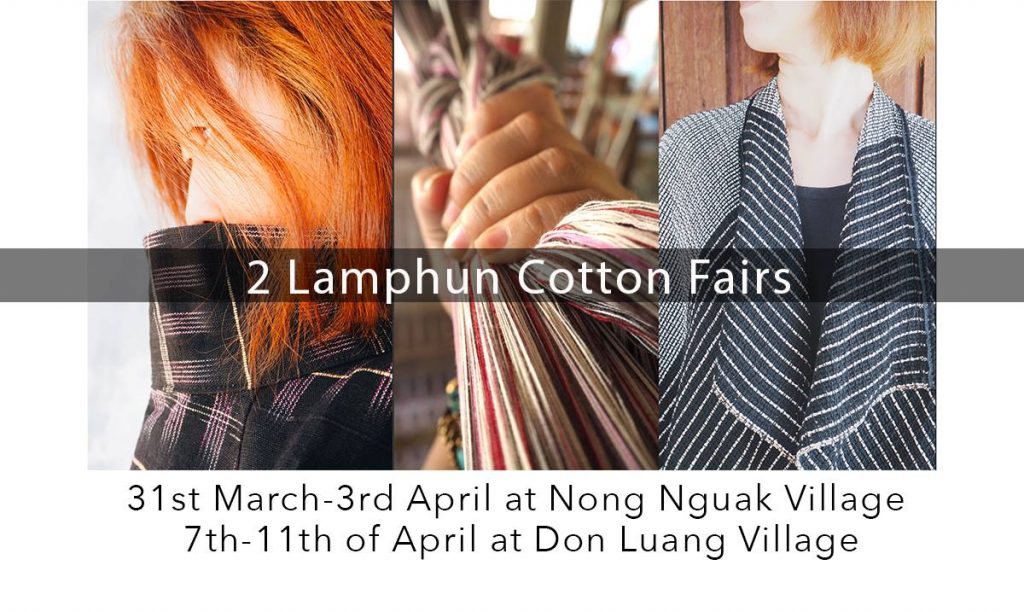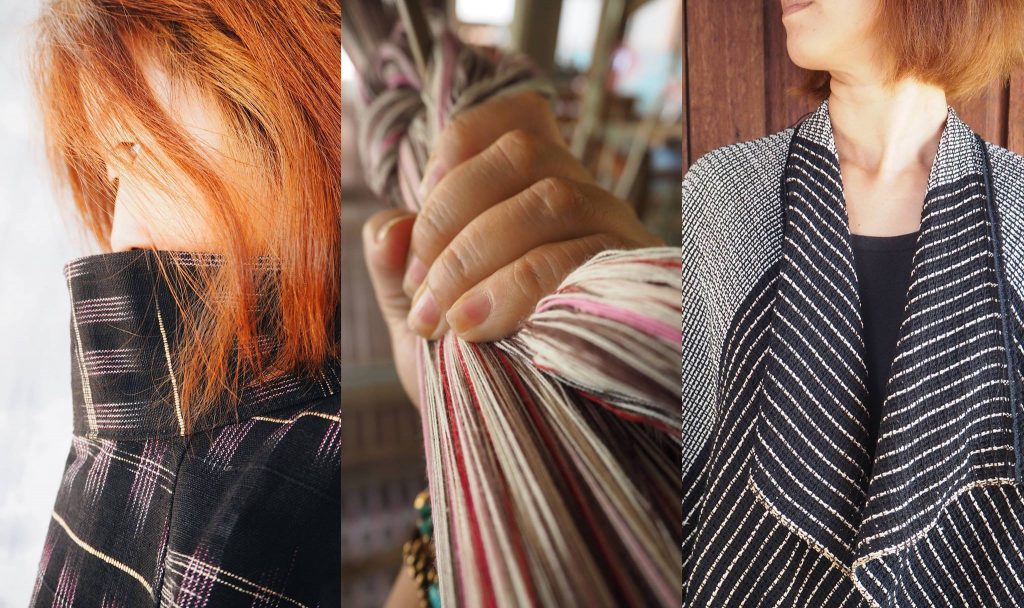
The small district of Pasang in Lamphun is known for two things; beautiful women and beautiful textiles. Its women have won numerous pageants on regional as well as national levels over the years and its cotton weaving industry is one of the most robust in Thailand, in fact the province claims Pasang’s population of 55,000 produces the largest amount of hand woven cotton products in the nation. This cluster of villages takes great pride in these two accolades and have turned a small cottage industry into not only a formidable source of income, but also a unique tourist attraction.
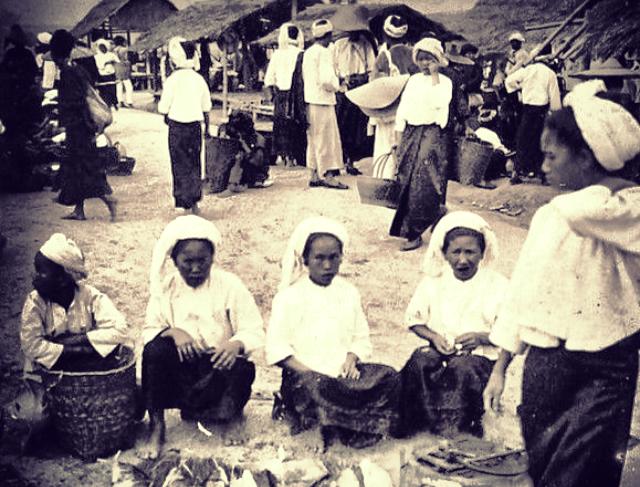
The people of Pasang are Yong, a subgroup of the Tai Lue who originally came from China’s Sipsongpanna. The majority of the Yong of Lamphun, however, migrated from Myanmar’s Shan States during the reestablishment of Lanna under Phra Chao Kawila in 1796, following years of abandonment of both Chiang Mai and Lamphun due to Burmese control. Phra Chao Kawila, brought an entire community of Yong settlers from the Shan States from all social strata, noble to the common, which allowed their culture take root in the new land. According to Songsak Prangwatanakun, in his seminal book, Cultural Heritage of Tai Lue Textiles, weaving has always been an integral part of the Tai Lue culture. Cotton planting was a duty of a woman and weaving held many cultural significances to its people. Young girls would weave while courting men would play musical instruments nearby. A young man, upon receipt of a woven pha chet from a girl, would hang it on his shoulder with pride, taking it with him on his journeys. Weaving skills were considered a great attribute for any future bride due in part to the fact that she could contribute economically to the household.
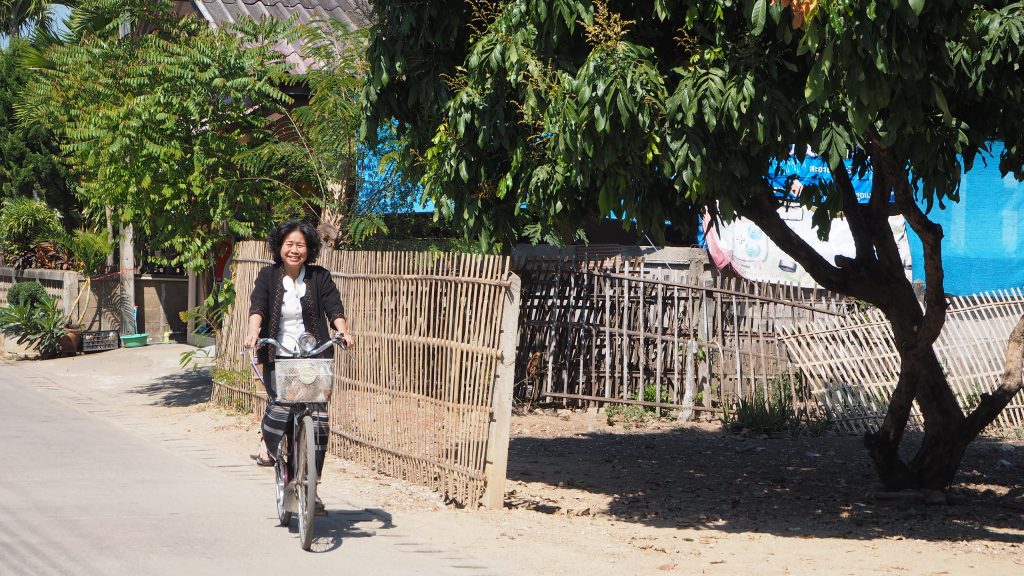
We wended our way in an electric shuttle bus down country lanes, past charming shady villages separated by paddy fields and lamyai farms, slowing down for the occasional sunning dog, stray chicken and cluster of children. Houses were on the most part wooden and traditional looking, hedges were trimmed, flower beds were well cared for and older women still walked around dressed in traditional pasin.
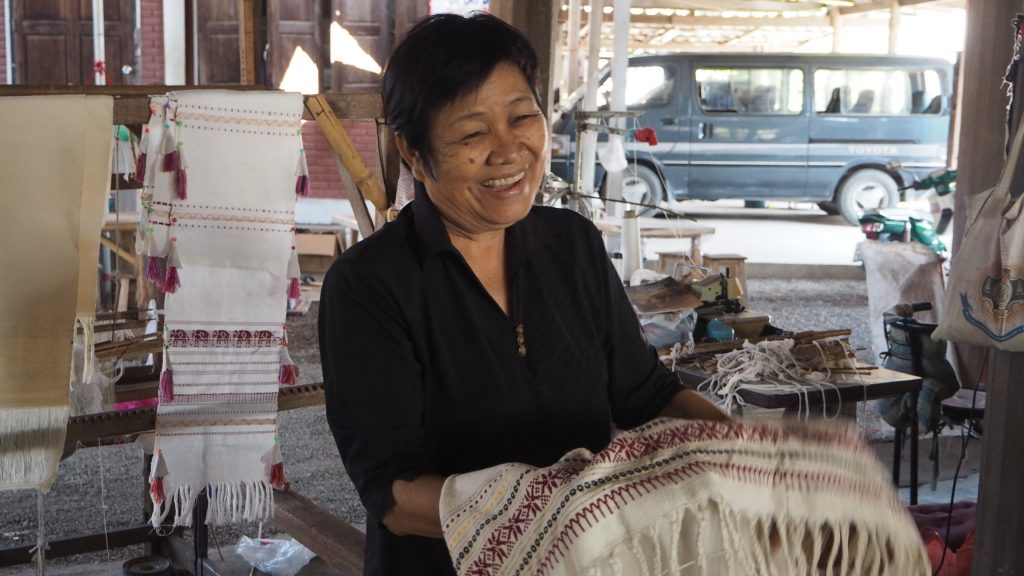
“Weaving is in our DNA,” an official from the local municipality explained to Citylife on our recent visit to Baan Don Luang, a charming village in Pasang.
What was a part of the cultural fabric, has now become an important source of income for the people of Don Luang. “I have been weaving since I was a child,” Buapetch Kadsongkram, 71, told us as she wove a plain fabric under her house. “All my grandparents wove and I used to travel to markets around the north to sell my material to pay for my children’s schooling.”
“When we first started, a 60 metre length of cloth about a foot wide would earn us 15 baht,” she smiled, explaining that a then-famous Chiang Mai fashion and textile brand, Nantakwang was the first to hire the women in the area to weave on a regular basis.
Nearly 20 years ago Buapetch had the vision to form a co-op of weavers from amongst her friends in the village, strengthening their position and upping their wages. Over the years her group has grown with the support of government initiatives such as OTOP, selling products not just all over Thailand, but with a regular market in Japan as well. “Today the same 60 metres nets us over 1,600 baht,” she laughed, almost incredulously.
We wandered through the village, stopping at little shops selling hand woven house slippers, decorative tung for temple offerings, bags, towels and clothes. We stopped at people’s houses, visiting women, old and young, busy working on their looms and spinning wheels as they explained to us the process of weaving (cotton is no longer planted and picked, being imported from India and China instead).

Don Luang Village
For the past fifteen years, an annual fair in homage of Pasang textiles has been held at Don Luang village. With 80% of the village’s 280 families involved in the weaving industry in some form or another _ weaving, sewing, packaging, marketing _ the entire village literally opens up to the public each year. Traditional Tai Yong houses are often built on stilts, to avoid floods, and it is this shady, breezy ground floor, puen kalang, where many weaving looms are set up and where village life pulses with women coming together in gossip, mothers teaching their daughters skills handed down from their own mothers and men coming a courting.
Virtually every single home in Don Luang will be opening their ground floors to visitors in a unique ‘kad puen kalang’ fair between the 7th and 11th of April when visitors come from all over Thailand to shop, learn about the centuries-old weaving culture of the Yong as well as join in numerous village activities ranging from weaving demonstrations to Lanna singing, local traditional bands performing and a wondrous array of Lanna food. As is usual, the activities are centered around the village temple where much of the action will be held, and radiates out amongst houses and shops, with a total of around 300 cotton shops setting up along village streets which will be closed to cars. This is a wonderful experience for anyone interested in the Lanna culture.
“This annual fair, like our co-op, has grown over the years and is a great opportunity for us to not just have some fun and make some sales, but also to show the world who we are as a people,” said Buapetch with pride.
Don Luang Temple map click here: https://goo.gl/maps/V5F8sWGxZG22
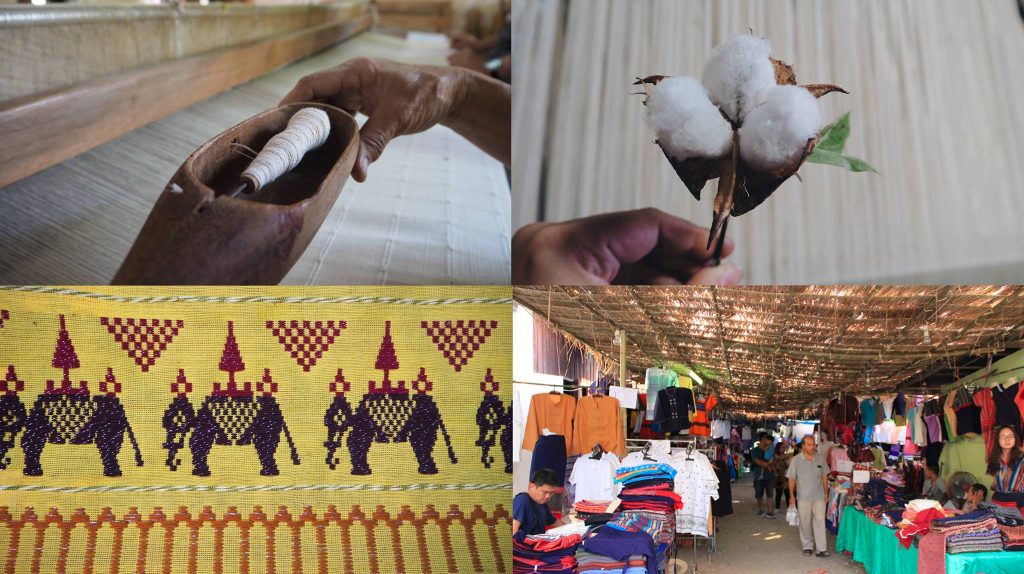
Nong Nguak Village
A short ride further into the countryside took us to Baan Nong Nguak, winner of a recent ‘most beautiful village in the district’ award, whose just over 1,500 villagers trace their ancestors to Sipsongpanna where 200 years ago five families braved the journey south to find a new home.
By around 1960 Pasang was a known destination for weaving, and many people visiting Chiang Mai from Bangkok would make a point to stop at Baan Nong Nguak to buy souvenirs to take home. Unfortunately with the new Lampang bypass being built around forty years ago, visitors began to drop off and villagers were forced to find work in the Lamphun Industrial Estate.
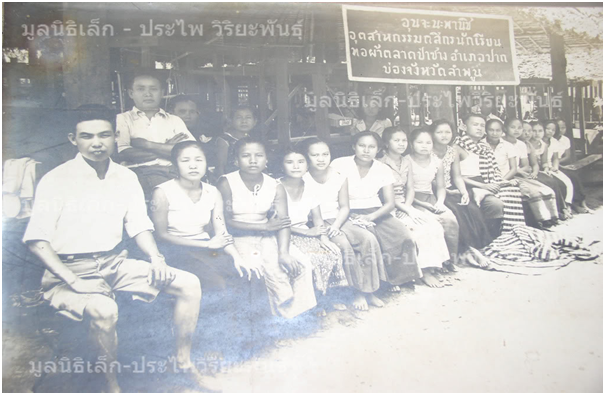
This change sounded an alarm amongst villagers who were concerned that the art of weaving would be lost to future generations. Local authorities stepped in and helped to found a community enterprise. Since its inception, Cheunchom Suklongchang, 65, has been the group’s president, overseeing a large team of weavers, who supply textiles to wholesale buyers in Muang Thong Thani, Bangkok, and Chiang Mai’s Warorot Markets.
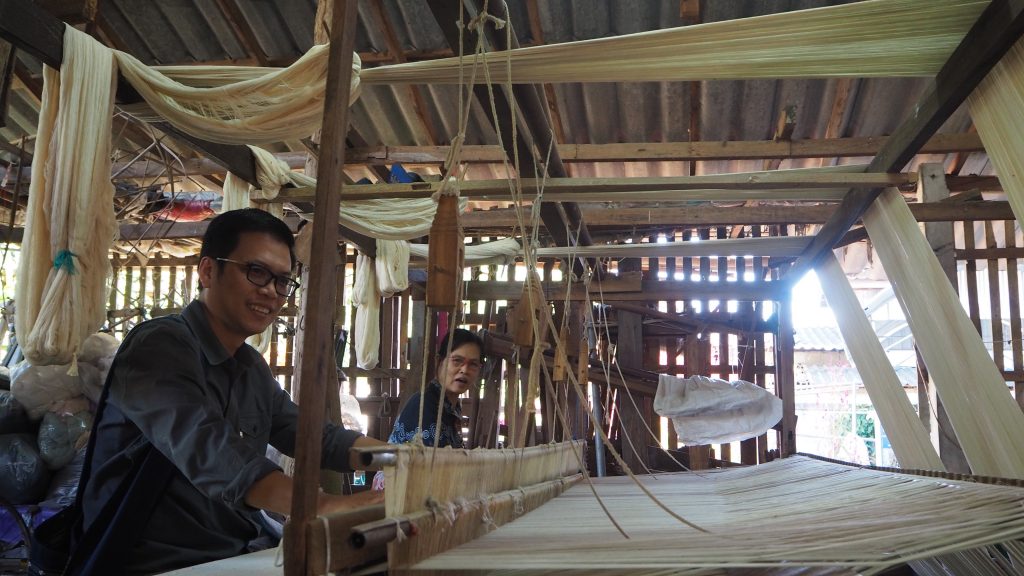
Not to be outdone by neighbouring Don Luang, Baan Nong Nguak will also be holding its own fair between 31st March and 3rd April. Its focus will be more on the 12 steps of weaving, and its cultural significance. There will be drum competitions, traditional dance, local shows and all sorts of local flavour for anyone interested in the culture of Lanna. A loom for two, used in the old days for romantic couples to weave together, is a highlight feature of the village though Buapetch says that while men used to weave just as much as women, today it seems that men in her village have lost interest in the art of weaving.
Nong Nguak Temple map click here: https://goo.gl/maps/PhuTyVhLns92
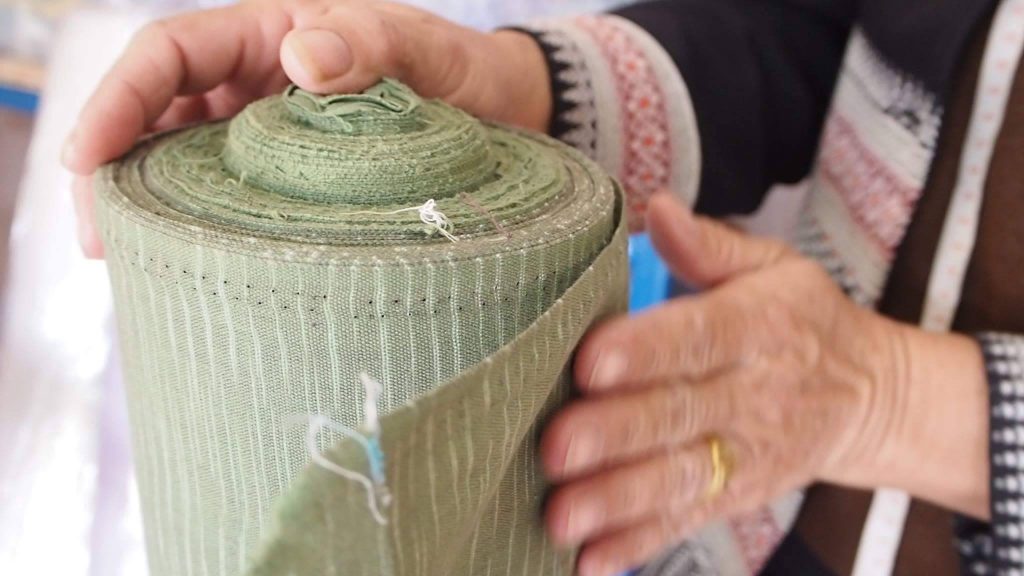
These two fairs are well worth a visit. For those who are new arrivals to Chiang Mai and the north, this will be an insight into Lanna culture unlike any you are likely to see in a city with sexy events and slick marketing. While funded by the local government, these fairs are both grassroots efforts by a people who are proudly holding on to their traditions. Your support will mean that future generations will have the chance to continue to be proud in their culture and most of all you will get a chance to shop, eat and have fun to your heart’s content.
It’s under an hour’s drive from Chiang Mai, but if you wish, there are a couple of charming homestays in both villages with prices in the low hundreds and which can offer a real experience into a traditional Lanna village life.
Make sure you head over to the fairs for some fair priced cotton textiles woven by the fairest ladies in our land.
For more information, and the Google map, visit the Facebook page: Maeraeng Cotton Or call 053 556732-3 www.maerang.go.th
Eat and Drink
Route 116 Coffee Bar
No trip in Thailand is complete without a refreshment stop. So make sure you pull into Route 116 Coffee Bar on the way to Pasang; a breezy and rather hip little venue of polished cement and raw bricks covered with graffiti art, providing all sorts of Instagram moments for visiting hipsters. Open 8.30am-5pm daily 093 163 1616 Facebook Route-116-Coffee-Bar-Pasang-Thailand

Love Is
A perfect little lunch spot serving a buffet of kanom jeen noodles with all sorts of delicious toppings, as well as khao soy, and other noodles. At night, it transform into a karaoke bar where you can sing the night away. Open 8am-10pm 093 9626252 Facebook: Loveislondlounge

Where to Stay
The two villages both have homestays, offering visitors a great opportunity to really take in the local culture. You can chose to stay in Lamphun town itself as well, as the villages are very close, but if you wish to have a village experience, Baan Don Luang Has around 30 homestays with prices ranging between 300-450 baht per night. If you are interested, contact the village tourism centre at 053 520528 for Don Luang Village, and the Pasang municipal office at 053 556 732-3 for Baan Nong Nuak.
Make sure you don’t miss these two traditional textile fairs in Lamphun’s Pasang on March 31st – April 3rd, 2017 and April 7th – 11th, 2017.
